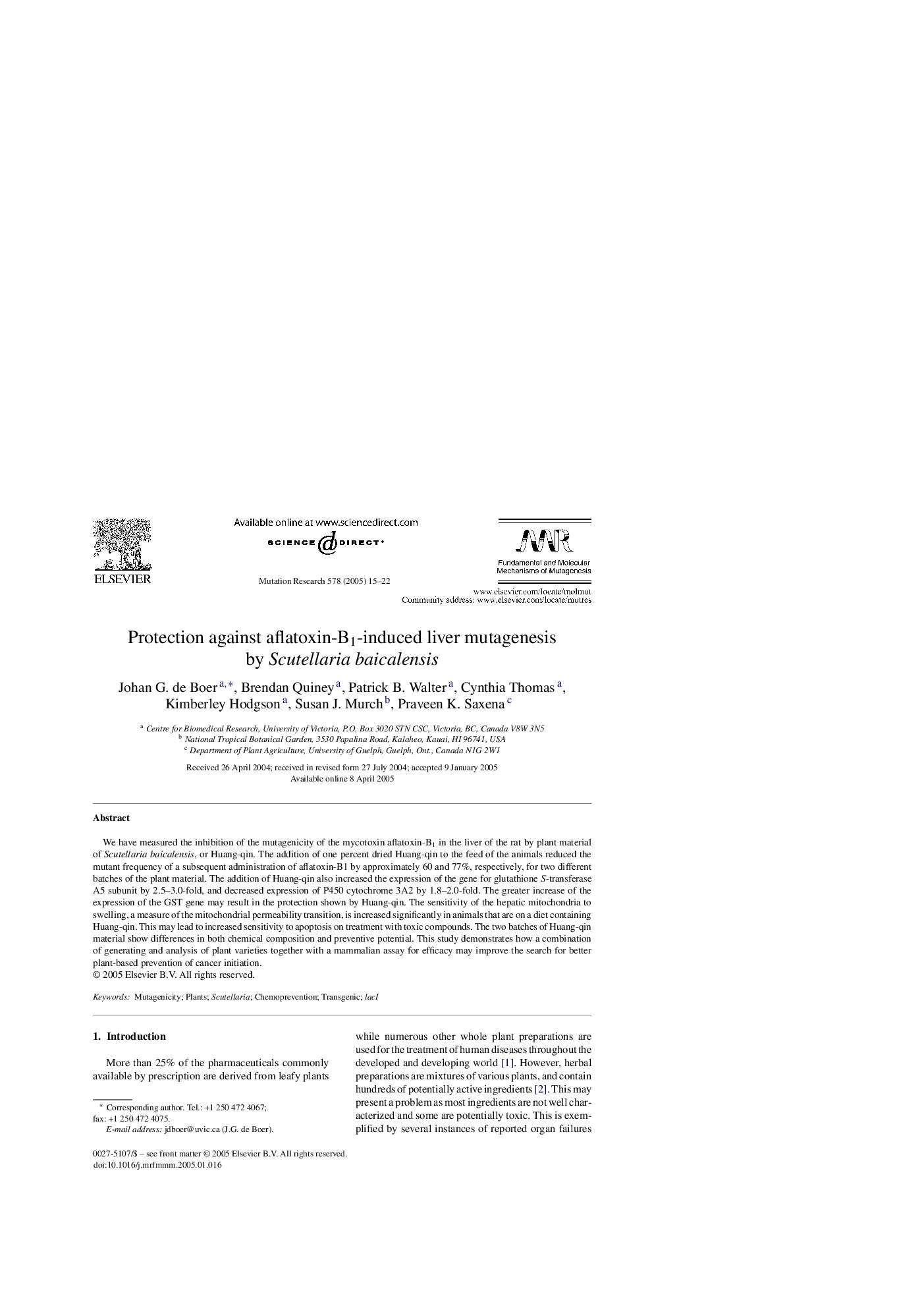| Article ID | Journal | Published Year | Pages | File Type |
|---|---|---|---|---|
| 9909006 | Mutation Research/Fundamental and Molecular Mechanisms of Mutagenesis | 2005 | 8 Pages |
Abstract
We have measured the inhibition of the mutagenicity of the mycotoxin aflatoxin-B1 in the liver of the rat by plant material of Scutellaria baicalensis, or Huang-qin. The addition of one percent dried Huang-qin to the feed of the animals reduced the mutant frequency of a subsequent administration of aflatoxin-B1 by approximately 60 and 77%, respectively, for two different batches of the plant material. The addition of Huang-qin also increased the expression of the gene for glutathione S-transferase A5 subunit by 2.5-3.0-fold, and decreased expression of P450 cytochrome 3A2 by 1.8-2.0-fold. The greater increase of the expression of the GST gene may result in the protection shown by Huang-qin. The sensitivity of the hepatic mitochondria to swelling, a measure of the mitochondrial permeability transition, is increased significantly in animals that are on a diet containing Huang-qin. This may lead to increased sensitivity to apoptosis on treatment with toxic compounds. The two batches of Huang-qin material show differences in both chemical composition and preventive potential. This study demonstrates how a combination of generating and analysis of plant varieties together with a mammalian assay for efficacy may improve the search for better plant-based prevention of cancer initiation.
Related Topics
Life Sciences
Biochemistry, Genetics and Molecular Biology
Cancer Research
Authors
Johan G. de Boer, Brendan Quiney, Patrick B. Walter, Cynthia Thomas, Kimberley Hodgson, Susan J. Murch, Praveen K. Saxena,
